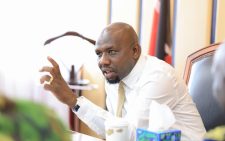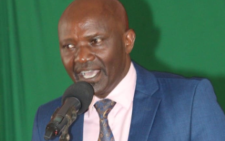Ins and outs of forex trading in Kenya

Forex trading has gained popularity in recent times. All thanks to the penetration of the internet to remote parts of Kenya, marketing strides of forex brokers, social media, and efficient regulation by the Capital Markets Authority (CMA).
Forex stands for Foreign Exchange. Forex trading is the buying and selling of foreign currencies for different purposes such as speculation, arbitrage, or hedging risk.
In recent times, investors have found a way to hedge these currencies and make a profit off their increase or decrease. The forex market is the most heavily traded financial market in the world. According to a 2019 report from the Bank of International Settlement (BIS), the daily volume of FX trading in the world stands at US$6.6 trillion.
However, the volume of trade does not mean the forex market is all rosy for traders. We’ll try to provide pertinent information a Kenyan investor should have before venturing into forex trading.
Forex Trading is regulated in Kenya
Online retail Forex Trading in Kenya is regulated by the Capital Markets Authority (CMA) & the regulation by the CMA is partly responsible for the growth in forex trading in Kenya. The CMA is responsible for licensing and regulating the activities of forex brokers in Kenya.
Currently, there are only six non-dealing forex brokers licensed by the CMA.
The six CMA licensed brokers are FXPesa, Scope markets, Pepperstone markets, Exinity, HotForex, and Windsor markets. For new investors in the forex market, the CMA advises you to trade with only regulated brokers.
Forex Brokers South Africa finds, that there are many offshore forex brokers that are offering their services in Kenya and accepting local payment methods; including those regulated with top-tier regulators. But traders must refrain from trading with these brokers as CMA advises against it and you won’t get investor protection and recourse in case of wrongdoing by the broker.
Forex is a 24 Hours market
The international forex market runs twenty-four hours daily and five and a half days weekly, closing on weekends and reopening on Sunday evenings. Currencies are traded across various financial centres like New York, Frankfurt, London, Hong Kong, Beijing, Paris, Singapore, Tokyo, etc. This means that when the New York market closes, others in different time zones continue. This is how the market remains open at any time you meet it.
However, there is no centralised marketplace for trading forex. Trading is carried out electronically through Over the Counter (OTC) means. Transactions here are done via connected computer networks.
Forex Market is volatile and liquid
Liquidity refers to how quickly an asset can be bought or sold. The forex market is the most liquid market in the world. Currencies can be bought or sold in seconds.
Volatility, on the other hand, refers to the frequency of change in the value of a particular currency pair. The international forex market is highly volatile i.e. it is susceptible to influence from diverse factors.
Various factors such as political events and news, interest rate, unemployment, the balance of trade, etc. all combine to influence the value of currencies in the forex market. A short announcement from the government might have far-reaching effects on the market. Hence the forex market is described as unpredictable.
Forex Trading is leveraged
The leverage here refers to a situation where the investor trades with borrowed funds from the broker. This means the trader purchases instruments that are greater than his initial capital investment.
For example, if a broker gives leverage of 1:20 and the trader invests $1,000. This means the trader can buy 20 times his initial capital investment hence controlling $20,000 worth of forex. If the market moves up by 10 percent, he can make a $2,000 profit off his $1000 investment and this is a 100% profit as he made double his initial investment.
However, if the market moves down by 10 percent, he loses $2,000 and begins to owe the broker.
Leverage provides the opportunity to magnify a trader’s profit but it is a double-edged sword and it can also magnify his loss. In fact, some traders have stopped forex trading and are in debt due to excessive losses. This is partly because unregulated brokers can offer leverage higher than the CMA recommended leverage of 1:400
New traders should not even go for the 1:400 leverage but opt for smaller leverage like 1:20, 1:10, etc. till they have enough practice and are skillful enough to handle higher leverage exposure.
Forex is Traded in Pairs
In forex trading, there are two currencies involved- the Base/Quote currency for example EUR/USD. This is called a currency pair. This currency pair shows the value of one currency to another.
If the exchange rate of EUR/USD is 1.1000. This means it will take 1.1000 USD to buy 1 EUR. To get the number of EUR required to buy a dollar, you’ll reverse the arrangement to USD/EUR and divide 1 by 1.100. In this case, it is 0.9090.
If you find symbols like EUR confusing, it shouldn’t be. The Forex market uses symbols or acronyms like this to represent currencies. USD for example represents the U.S dollars, EUR represents the Euro, AUD represents the Australian dollar, and KSh represents the Kenyan Shilling, etc.
The arrangement of the currency pair tells a lot about your trade. For example, if you trade EUR/USD, it means you bought EUR and sold USD with the expectation that EUR will rise against the USD.
Forex Trading is Risky
Contrary to what the public says about forex trading being an elixir out of the financial struggle to a world of wealth and financial freedom, it is not as you think. Forex trading is a highly risky venture. Forex trading is not going to make you a millionaire overnight. In fact, it can even make you poorer. Research by Forex Brokers SA found that the average figure of traders losing money in forex could be as high as 89% based on reported figures of the top 20 brokers in the region.
However, this does not mean people don’t make money trading forex, but the number of forex traders losing money is higher which is over 85%. And there are only a handful of successful traders out there.
Self-discipline, experience, having a good strategy, and risk management make a difference in success and failure in forex trading.
The successful traders are well-grounded professionals with years of experience under their belt. They have mastered the art and science of the forex market but still, this does not make them immune to losses. It’s just that they have the skill to bounce back from a loss and manage leverage trading.
Common Forex terminology
Since forex trading is a highly technical venture, its terms are also technical. Below are the meanings of terms such as Spread, pip, lot size, leverage, margin, bullish and bearish, and going long/short.
Spread:
When you start to trade forex, you buy currencies from the broker at the beginning of your trade and sell these currencies when you end your trade. The difference in price between when you buy the currency and sell is referred to as a spread.
If the bid/ask price for EUR/USD is 1.1000/1.1004, the spread is 1.1000-1.1004 = 0.0004 or simply expressed as 4 pips while ignoring the zeros.
Pip:
Also known as percentage in point, pip is the smallest change noticeable in the price of a currency pair. The pip is calculated in four decimal points in order to get the value of the currency in the market. As with the example above pip is also a unit to express spread.
Lot size:
This is the contract size of the trade that you open. A typical standard lot size in forex is equal to 100,000 units of the currency while a mini lot is 10,000 units and a micro lot is 1,000 units. Some brokers offer mini lots that are smaller than the standard lot. They do this because of new traders or low-income traders.
Leverage:
This is an opportunity provided by a broker to a trader enabling him to trade a larger contract size of forex with little investment.
For example, a 1:50 leverage allows you to trade 50 times your initial investment. That means if you trade with $1,000, you’ll make a profit as someone that is trading with $50,000. However, your losses will still be amplified in that way.
Margin:
This is the initial capital one needs to start trading with leverage. This means that if you open a trade with $1,000 and the leverage is 50:1, the total exposure is $50,000. Margin here is a fraction of the total exposure. Margin is inverse of leverage which in this example is 1/50 or 2%. The trader will have to lay down 2% of the total exposure of $50,000 before trading can commence.
Bullish and Bearish:
These are terms used to describe the trajectory of price movements in the market. A bullish market is one that is on the rise. On the other hand, a bearish market is one where the price is decreasing. It is characterised by low prices.
Going Short/Long:
When you go long in forex, you buy the first currency in a pair and hope it increases against the other.
For example, in a currency pair such as CAD/CHF, you sell CHF and buy CAD with the expectation that CAD increases.
On the other hand, when you go short, you buy the second currency in the pair and sell the first in the hope that the second rises against the first.
The facts presented in this piece are enough to give a new or intending forex trader or investor a foundational knowledge of the nitty-gritty of forex trading.












